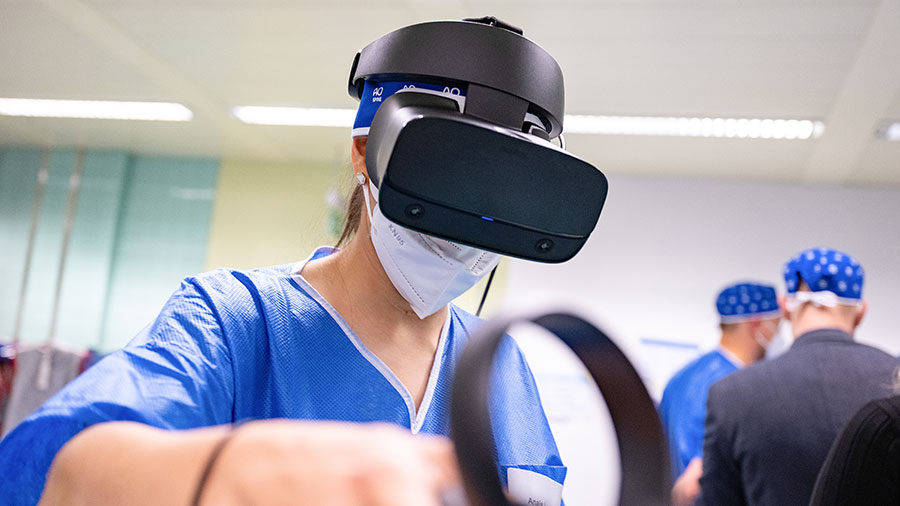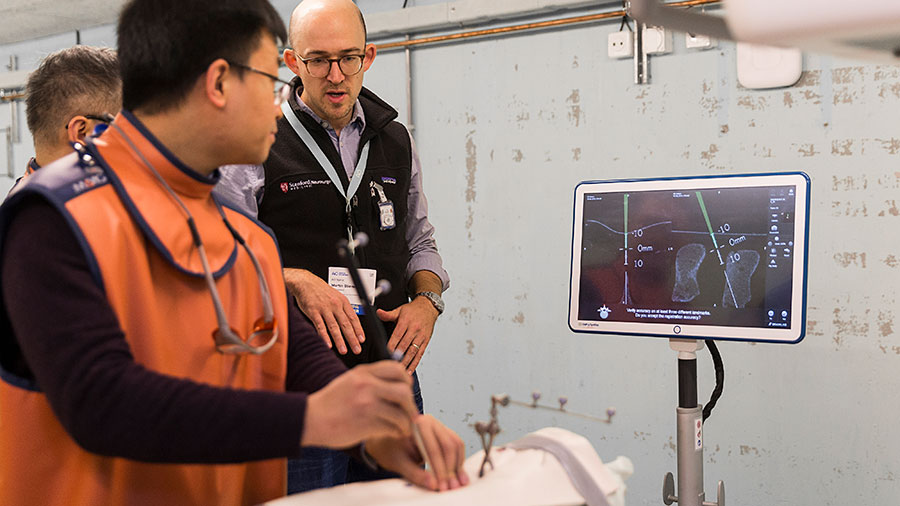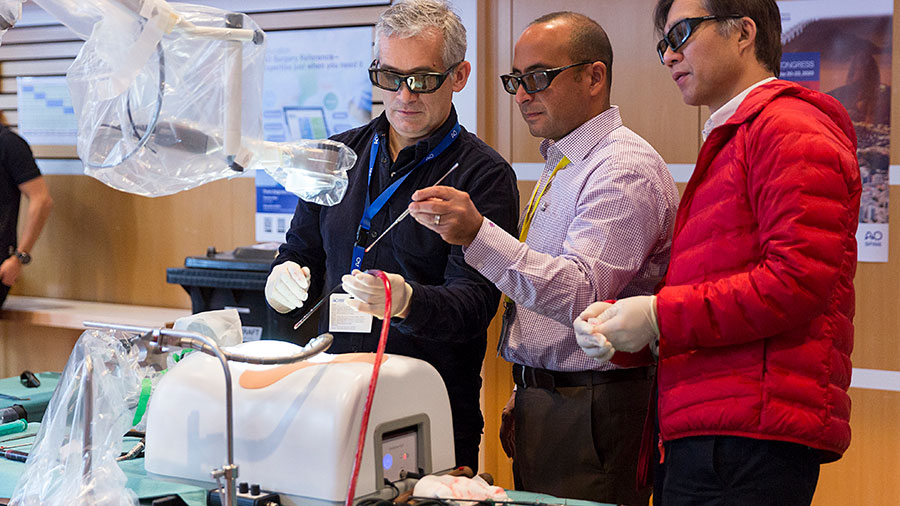Educational technologies for simulation in spine courses are focus of new white paper from AO Spine Educational Strategies Taskforce

In support of course chairpersons and faculty worldwide in planning their courses, the AO Spine Educational Strategies Taskforce has developed a first draft of a white paper, “Educational technologies for simulation in spine courses.”
Based on the work of taskforce members Steven Theiss, Alaa Ahmad, Alpaslan Şenköylü, Muzahem Taha, Luiz Gustavo, Jose Manuel Ignacio, and Harry Gebhard over the past year to collate information on current options and trends in simulation along with the current evidence, the white paper examines five types of simulation technology: dry bone models and enhanced versions, synthetic anatomical models, telementoring, virtual reality (VR), and augmented reality (AR). To provide a structured approach to the assessment of new simulation technology and products, the paper’s authors created a template to collect a range of information about various products, including procedures covered, realism with regard to patient tissue, instruments, and imaging; assessment and recording; cost and scalability; and potential uses at AO Spine events and in the curriculum.
A first version is now available for faculty to review and provide feedback on; it contains the introduction and overall structure and the detailed analysis of products and companies is being completed.
Before finalizing the document, the AO Education Institute and the taskforce are interested in hearing about AO Spine faculty experiences and any other products that should be reviewed. Faculty members who have used a new simulation of educational technology and are willing to share their plan and feedback, can complete the following template and e-mail to michael.cunningham@aofoundation.org for the taskforce to review.
The final white paper will be stored and updated in the Faculty Support Package for faculty and chairpersons.



